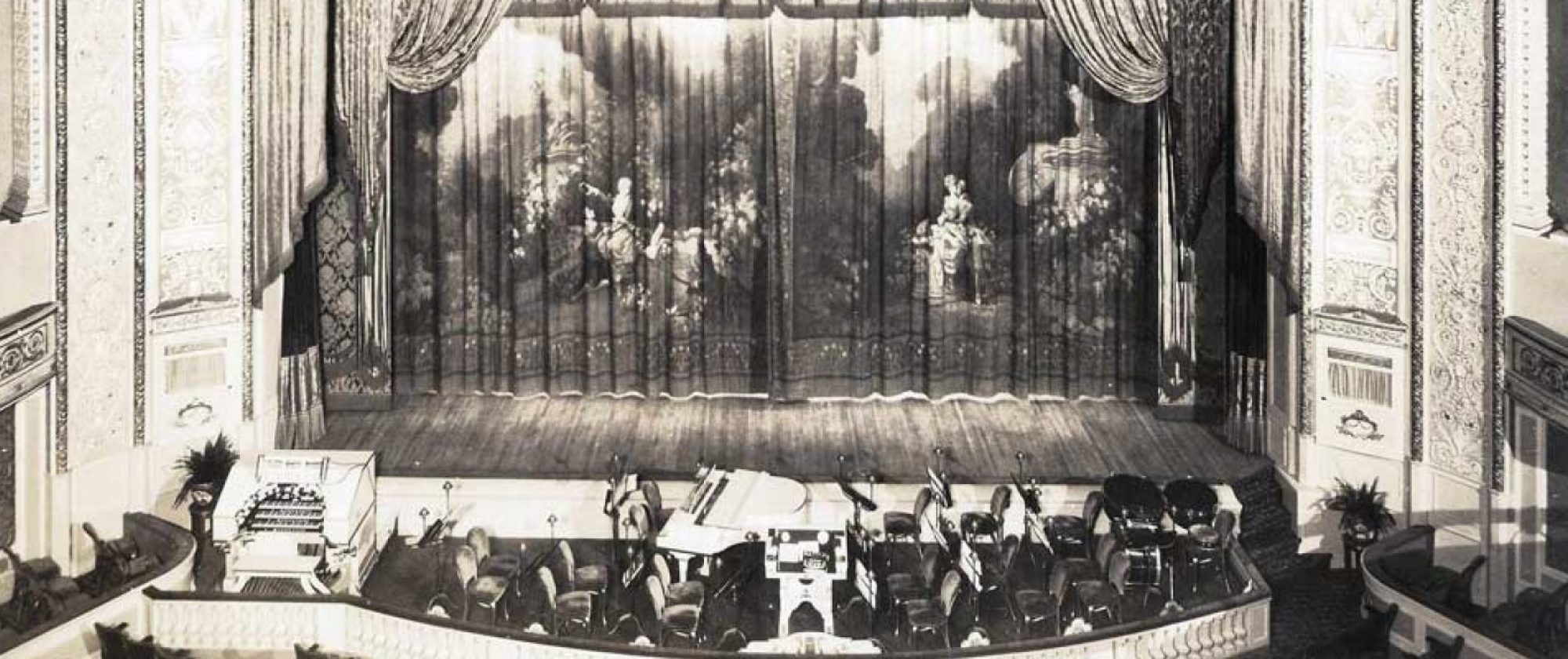Blossom Seeley and Benny Fields, assisted by Sam Miller and Gene Cass, followed, and suffered accordingly. Miss Seeley has always had a certain niche in the hearts of the vaudeville goers as a syncopated songstress. She was an excellent coon shouter, but why try to get away from this? She has built herself a production and she has Benny Fields, but Blossom of old, isn’t. And if it were not for Fields working up her numbers and his own specialty, it would be no act at all.
Santos and Hayes Revue appeared next, and when they walked out there was no doubt who drew the crowds in. They were one howl after another, followed by “ohs” and “ahs” of astonishment at the drapings [sic] and costuming. With a few more dollars spent and the act lengthened out it could be Broadway production.
[Fradkin and Miss Jean Tell] were followed by Babcock and Dolly, which looked like an old time ollo act. The man tries hard for comedy with some risky neck falls that throws the dust in the audience’s face, while Dolly tries hard but vainly to burlesque a French soubrette. She does make two changes with gowns that brought a gasp.
Stanley and Birnes, introducing themselves with a neat, up-to-date song with a patter for a chorus, danced their way into a well sized hit, and should have fourth position, and Babcock and Dolly, who held this spot, moved up or even off, which would have helped considerable.
Kirby, Quinn and Anger registered from the tape in their eccentric, laughable travesty and run of falls, low comedy and flip repartee. Their Egyptian burlesque was a howl. Five bows and encore for this three, with the woman breathlessly holding the scorching pace set by the male comics.
Albertina Rasch showed an improved dance routine, with more speed than marked her last season’s arrangement. A storm effect attended her creation, “After the Storm,” a Hungarian conception. The effect might be slowed down a few notches, The act went creditably.
Joseph M. and Mellie I. Norcross claiming combined age of 144 years, did the dances of yesteryear. There was no shimmying, but the dancing was pretty and put some of the nowadays wiggles to shame. Could have held a harder spot.
Valeska Suratt, the recurrent manifestation, looking like two-year-old and playing with that lithe vigor which attended her when she was a singer, when she was a dancer, when she became a film star and when she is, as now, a dramatic actress. Suratt spells vigor, fibre [sic] and animation, and she decks this with rare taste in dress, colorings, atmosphere, settings and detail – everything about her and the playlet, “Scarlet,” is daring, vibrant and positive. There is nothing manby pamby in anything attending it. The star and the material have at times perhaps been criticized, as all things human are, but no one ever said they lacked red blood.
Supported by an acting cast, with no posers, every one giving an account of the part assigned, “Scarlett” stood up for Miss Suratt at least as powerfully as it did last season. It took hearty laughs, was interspersed with applause, and at the finish drew seven honest curtains. The matinee was packed as a tribute to Miss Suratt’s drawing power, though it was the week before Christmas week and the unseasonable heavens sent splashing rain.
Bert Fitzgibbon introduced his brother, Lew, playing the piano. Bert plays a xylophone besides doing other nutty things. Then they trade instruments. A plugger back stage takes the place of the jack in the box of yore. Went entirely Fitzgibbon, which means going O.K.
Emma Haig, came next, and on charm, lightness of dancing, carriage, swift switches in the routine and an all-around air of polite but chummy atmosphere, whizzed through and flirted off for a hit.
